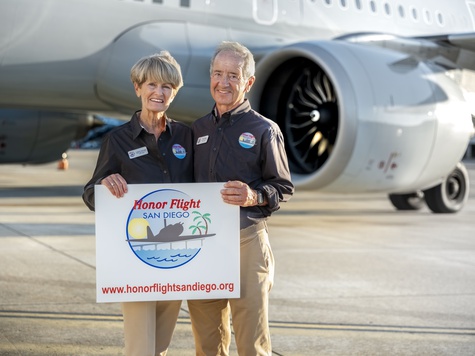
It was after 11 p.m., and the streets of Hanoi were deserted. Everywhere he looked, Paul Granger glimpsed a city in disrepair: dilapidated buildings held together with bamboo scaffolding, streets strewn with potholes, and a crater large enough to hold an SUV. It was 1994: could this still be damage from the American bombing in 1972? It had been more than twenty years since the end of the Vietnam War. Relations between the United States and Vietnam were better, but they were not yet “normalized.” That would not happen for another year.
Paul’s hotel was just a few blocks from the “Hilton”—the infamous “Hanoi Hilton” prison where Paul, then an Air Force lieutenant, had been held captive for three months at the tail end of the Vietnam War. His B-52 bomber was one of the hundreds of planes involved in the massive bombing campaign over the skies of Hanoi that had been initiated by President Richard Nixon in December 1972.
Now, Paul was back in Hanoi—this time as a tourist—and he and two fellow pilots were going to attempt to get inside the prison where he had wanted so desperately to escape two decades before. Paul and his traveling companions started walking through the dark, empty boulevards of the city, which still boasted French colonial architecture. “I was really apprehensive,” Paul remembers. They passed by a few bars, but not much else. “I told the guys that I didn’t want to go.” But Paul Granger’s friends were adventurous and persuasive. Approaching a uniformed guard standing at the formidable entrance of the Hanoi Hilton—the French-built structure officially called Hỏa Lò, which means “fiery furnace”—the three men casually asked if they could take a tour. The guard spoke a little English and understood their request. Not surprisingly, the answer was no.
“So, we walked around the perimeter, and I showed them where I thought my room was after I got out of solitary confinement,” Paul recalls—a prison cell isolated from other men but surrounded by humanity, situated in the middle of a bustling city. Deterred from their primary mission, the trio headed to a bar, where the patrons welcomed them warmly and spoke enthusiastically of their hopes for normalization between their two countries. It was surreal: sharing a beer with his former enemy a few blocks away from his former prison.
But the real surprise came the next day when they visited a Vietnamese army museum. Piled at the entrance was a mountain of debris, including B-52 airplane parts, the helmet of one of his friends, dog-tags, guns, artillery pieces, and a radar that was used to shoot down a B-52 on December 20, 1972, the day Paul’s plane was felled. Then, on a wall near the artifacts was a poster-sized vintage photograph of seven American men taken as prisoners-of-war that day—including Paul. There he was, pictured hours after his capture by the North Vietnamese, his arm in a sling and his face swollen from being bashed in the face by a rifle butt. There he was, with his wartime trauma on display for the public in perpetuity.
“It was actually a good transition to realize that I was there, and that I sorta had a feeling that I was glad I was there,” Paul recalls. It had taken twenty years and a 7,700-mile flight to get there—to that place of healing. “It was closure; I could feel it.” Paul says. “I just knew I was going to be okay.”
A compact man with soft edges, Paul keeps his emotions close to the surface, and his sentiments are honest and raw. He exudes calm and balance and fortitude and a keen vision, a perspective gleaned from decades of watching the horizon—as a commercial airline pilot. Now that he has retired, he and his wife, Leslie, have continued to take many trips, including one to Tahiti on a sailboat—by themselves.
 Most of the trips they take now are Honor Flights—sponsored by the organization of the same name that underwrites veteran visits to the war memorials in Washington, D.C. As volunteers, Paul and Leslie have taken veterans on sixteen of these journeys. “Every flight has been a life-changer for us,” Paul says. Both he and Leslie have been transformed by them. But so have the veterans they escort. Paul spreads the healing that he experienced, in Hanoi in 1994, to many more war veterans.
Most of the trips they take now are Honor Flights—sponsored by the organization of the same name that underwrites veteran visits to the war memorials in Washington, D.C. As volunteers, Paul and Leslie have taken veterans on sixteen of these journeys. “Every flight has been a life-changer for us,” Paul says. Both he and Leslie have been transformed by them. But so have the veterans they escort. Paul spreads the healing that he experienced, in Hanoi in 1994, to many more war veterans.
“They walk onto the airplane at 5 o’clock in the morning, sort of slumped over, just sorta dragging in,” he relates. Maybe they are hoping for a nice vacation. Possibly they have never visited the famous war memorials in Washington. Or perhaps they are just participating in the trip because their families encouraged them to do so. Whatever motivation gets them on that plane becomes second to the real benefit of the trip: a catharsis for all the participants—but especially for those who served in Vietnam.
Sharing a hotel room, the men reminisce about the close quarters of deployment. Visiting the Vietnam Veterans Memorial wall together, they all touch the engraved names of brothers lost. And swapping stories at the hotel bar together, they can recognize and vent about their shared experience—not just the war, but about their homecoming.
Vietnam veterans had to sneak in the back door when they came home to America. The nation wanted to put the unpopular war and its tragic ending behind it. The returning veterans were just a visceral reminder of what the nation had sacrificed—and lost. And the country did not want that reminder.
The U.S. soldiers who served in Vietnam were told to take off their uniforms when they arrived home. Returning to their hometowns alone, they were unheralded, shunned, and decried. Hollywood portrayed them as damaged and shameful. An entire generation of veterans, who went to war simply because their country asked them to, was forced to nurse its war wounds alone. “Some of the men carry it with them still,” Paul points out.

But the Honor Flight visitors whom Paul and Leslie take to the World War II Memorial, the Korean War Memorial, and the Vietnam wall are greeted with a gauntlet of adult and child volunteers cheering and clapping for them. The crowds listen to the men’s stories of bravery and resilience—and forgiveness. They shed tears for the men. They hug them. They thank them for sacrificing so much.
The ripple effect on these veterans often is stunning, Paul says: “By the end of the flight, when we bring them home, to San Diego, they come marching down”—with their heads held high. They now realize they, too, have a legacy, that their contributions were important. And their families say that after the trip they are just, well, different.
Very few of the veterans who embark on these journeys with Paul know about his life-changing flight five decades ago. Nor do they know about the life-changing flight of Paul’s father, more than eighty years ago.
Paul hails from a French-Canadian family, raised near Burlington, Vermont, where he attended a French Catholic school until he was five. His father, Clement Granger, was a belly-gunner on a B-24 that was shot down by flack during an attack on nine oil refineries around Ploiesti, Romania, in World War II. His plane was lost, but Clement managed to walk away uninjured. With the help of the Romanian underground, he avoided capture, eventually making his way to friendly forces on foot.
Paul was not so lucky. At the end of the contentious Vietnam War, when President Nixon launched hundreds of B-52s to decimate Hanoi during the Christmas holidays of 1972 to help force the North Vietnamese back to the negotiating table, Paul was the co-pilot on one of them, and it was shot down by a surface-to-air missile. Out of a plane crew of six, only two survived the ejection and the aircraft’s ensuing crash: Paul and his navigator Capt. Tom Klomann. “I don’t know how I made it,” he exclaims. The sky that night was raining SAMs. The barrage of missiles was so dense that “you could almost walk on them.” Three of them hit his plane. Everything went black and his steering yoke froze. The bomber was in a flat spin and its right wing was on fire. There was no choice: he flipped the switch that turned on the “eject” sign for all crew positions. “And then I went out,” he says. “And that was that.”
Taken captive for three months, Paul was released in March 1973. Along with another 590 POWs, he was greeted at home with a national celebration. The men’s release was broadcast on live television and they were feted with homecoming parades, lifetime passes to Major League Baseball, media tours, and free vacations. Paul was met on the tarmac by Leslie; two brothers, a sister, two aunts, a host of friends and neighbors; and his parents. When father and son locked eyes, the tears welled. Just before Paul’s deployment to Southeast Asia, Clement had taken out a five-dollar bill from his wallet. Tearing it in half and handing one piece to Paul, he promised him, “When you return from Vietnam, we will take these two halves and go share a beer together.”
And they did.
Photographs by: Jamie Howren
Profile by: Taylor Baldwin Kiland
